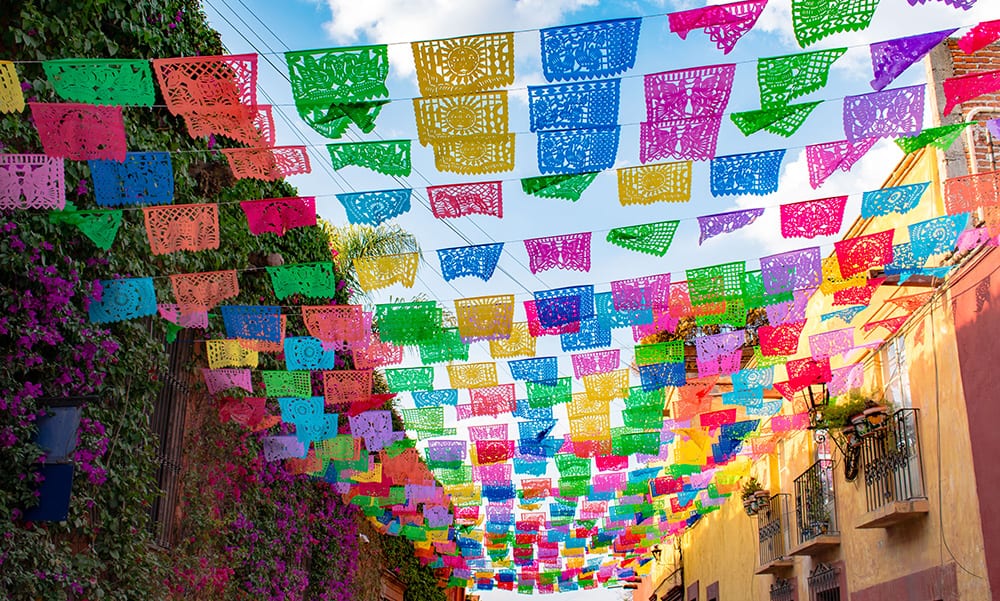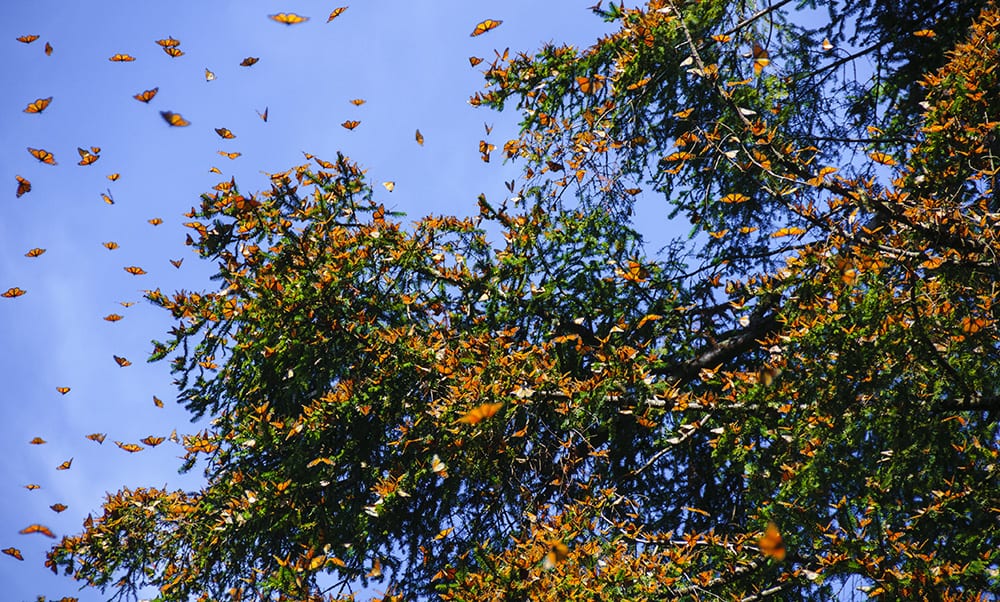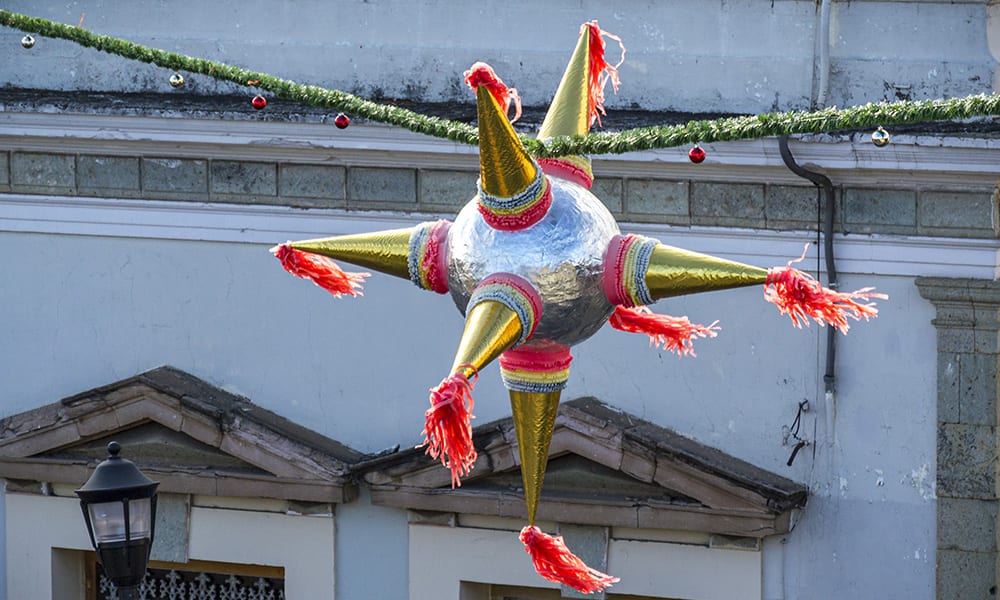Every culture has its seasonal traditions, and today we’re talking about Mexican traditions and celebrations in the fall and winter that aren’t the Day of the Dead. With a range of fun festivities, the festivals we’re highlighting today are sure to get everyone in the fall and winter spirits!
1. Mexican Independence Day | 2. Festival Cervantino | 3. Monarchs And Corn Harvest Nov | 4. Posadas


Mexican Independence Day
(“Diez y Seis”)
Here’s a fun fact: Cinco De Mayo is not Mexico’s Independence Day. Mexican Independence Day is observed on September 16th, and, according to My Heart of Mexico, it’s the “biggest party of the year!” The festivities begin on the evening of the 15th and continue on through the next day. Could part of the “big party” reputation be rooted in the fact that Mexican Independence Day festivities are always two days long? Maybe.
Historically, September 16th is the same day (in 1810) when Father Miguel Hidalgo y Costilla urged Mexicans to rise up against the Spanish-born ruling class. On its website, Travel Tips explains: “In towns and cities across Mexico, citizens gather at midnight on September 15th in their community’s main square to hear the mayor, or, in Mexico City, the president, repeat Father Hidalgo’s Grito, or “cry for freedom.”
This sounds like a lot, but the tradition continues as such… “At sunrise on the 16th, military and civic parades kick off a day of celebration that includes fireworks, food, and music — three key elements in any Mexican fiesta.”
The celebration starts with all-night parties that include plenty of singing, dancing, mariachis, tequila, fireworks displays, and delicious food. On the 16th, there are parades and more parties. This traditional fall celebration in Mexico would make anyone, Mexican or not, love the Mexican autumn season!


Festival Cervantino
The Festival Cervantino is an annual celebration that’s held in Guanajuato, a small colonial-era city located in central Mexico, with a history of having a large cultural scene. The festival takes place in the month of October and lasts between two and three weeks. While there are several important fall and winter celebrations in Mexico, Festival Cervantino is one of Mexico’s most celebrated cultural festivals and is the most important cultural and artistic festival in the Spanish speaking world and ranks among the top four festivals globally.
Now Latin America’s biggest celebration of the arts, this festival had quite humble beginnings when compared to its present-day success. This time-honored tradition began in the 1950s and became the official International Cervantino Festival in 1972. The website What Guanajuanto explains how the festival stems from the University of Guanajuato’s student performances of short works that are known as entremeses (hors d’oeuvres) penned by Miguel de Cervantes in the city’s plazas and open spaces.
While the extravaganza now celebrates all sorts of artistic creations ranging in dance, music, film, theater, visual arts, and even various nationalities, we do well to remember that the Festival Cervantino started as Guanajuato’s festival to pay homage to Miguel de Cervantes, a Spanish writer who has been widely regarded as the greatest writer in the Spanish language along with one of the world’s pre-eminent novelists.


Monarchs and Corn Harvest
(Monarch Butterfly Cultural Festival)
With this festival, the monarch butterfly is the life of this party! Every November, the forest located between the Mexican states of Michoacan and Estado de Mexico is covered in fluttering orange, black, and white wonders. As part of their migration cycle, “monarch butterflies fly around 2,800 miles from Canada and the United States to spend the coldest months of the year in warmer lands,” says this article on the website Travel and Leisure.
This festival was established as a result of the monarch butterfly’s arrival in Mexico during the corn harvest. The first monarchs are said to arrive at their winter home in Mexico each fall by the first of November, creating an inevitable correlation between the Monarch Butterfly and harvesting corn which also takes place in the month of November. This overlap has also earned the monarch butterfly the second name, harvester butterfly.
Since the monarchs’ arrival likewise overlap with the cultural Day of the Dead, people connect the arrival of the monarchs to death/the souls of ancestors…but that’s another bit of knowledge for another day. If you’re searching for a fall Mexican festival to experience, there are three monarch butterfly zones in Michoacán and three in Estado de Mexico that are open to visitors!


Las Posadas
(Spanish for “lodgings” or “accommodations”)
As part of the fall and winter celebrations in Mexico, traditional fiestas called “posadas” are held in the nine days leading up to Christmas Eve. Posadas began in Mexico during the 16th century and has since been a yearly celebration throughout Mexico for over 400 years and is a celebration that is meant to simultaneously commemorate the nine months of Mary’s pregnancy and the experiences of Mary and Joseph as they made their way to Bethlehem. Thus, the celebration begins on December 16th and ends nine days later, on December 24th.
Today, this tradition is held in neighborhoods across the country. It begins at dusk when a procession of the faithful takes to the streets with children often dressed as angels and shepherds. Religious figures, images, and lighted candles are likewise a part of the festivities. Then, Mary and Joseph’s journey to Bethlehem are reenacted by groups of friends and family with one household representing the Holy Family. Here’s how the tradition transpires over the nine-day course:
- The group representing the Holy Family stands outside a series of houses, singing songs and asking for lodging.
- They are refused time and again until the group reaches the designated house where they are finally permitted to enter.
- Prayer and song continue in the home and festive foods are shared.
- The evening ends with a piñata in the shape of a star.
The tradition continues each evening with a different house as the chosen Posadas. Once the final “Mary and Joseph” are permitted to enter and the festivities directly linked to that event are complete on the last night (Christmas Eve), a midnight Mass is usually featured.
Enjoy Fall and Winter in Mexico
How do you feel about these Mexican traditions and celebrations that are celebrated in the fall and winter? In general, the holiday season is a wonderful time to visit anywhere to witness the many cultural customs that take place, but Mexico has a particularly festive atmosphere about it. If you ever find yourself in Mexico during the fall or winter season, be sure to experience at least one of these fall and winter Mexican traditions before the year ends!


